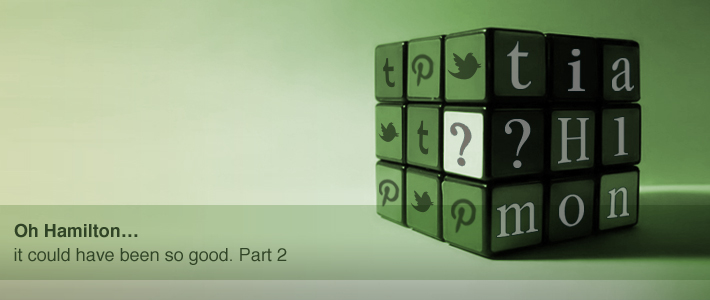
THE AFTERMATH – BLAMING SOCIAL MEDIA
Some have argued that examples, like the situation with Hamilton, show that Twitter and other social media are dangerous and a liability to use.
IT’S NOT SOCIAL MEDIA; ITS THOSE THAT MANAGE IT
We disagree. In the wrong hands, poorly managed social media campaigns can be disastrous. But a well-educated, well-thought out, engaged social media campaign can be an incredibly rich and effective way to interact and engage with your audience.
Social media is not inherently good, bad or evil; it is a tool–a tool allowing people to connect and share information. In this case, social media was used poorly. You cannot blame the hammer if a table is poorly built. The hammer is the tool that was poorly used.
This comment to one of the articles accurately sums up the feelings of many regarding the City of Hamilton situation :
“I’d say the majority of the backlash was because the campaign was incredibly shoddy and poorly executed. Rampant use of jargon, a poorly designed website, and no apparent connection to the community it purported to engage understandably raised people’s ire, especially when we saw the price tag…”
VOICE OF THE PEOPLE
The Internet loves to speak up when they sense that something is wrong. And in this situation, they were justified to raise their concerns. It is in no way social media’s fault that the firm did not maintain a professional campaign. It was the firm itself who wasn’t professional and proficient in their use of social media, or their engagement and knowledge of Hamilton. For example, the Pinterest page had images from other Hamiltons, rather than the Hamilton in Ontario that they were representing . A main image on the website was of a bike trail in Ottawa.
Yes, it is true that people are more open on social media and can say more pointed comments than they would while talking face-to-face. However, claiming that Twitter and other social media cannot be used to share insightful thoughts or engage a community is untrue. One only has to look at the incredible success in Newark, New Jersey, where it’s mayor, Corey Booker, uses social media as one of his primary communication vehicle to his constituents, helping them to be heard, and in real time. “I’m on it!” is his Twitter catch phrase.
TWITTER DOUBTERS?
Still people doubt the validity and worth of social media. Some Hamilton councilors have shown their ignorance towards social media: “It’s great for saying ‘Oh, I went to the concert tonight,’ but that’s about it.” In a CBC Hamilton interview, one councilor said that he prefers online discussion to take place through a blog or personal website, “because they can be controlled very carefully.”
You cannot control people’s thoughts or opinions. It is their right to speak up and say that something is wrong. From this statement, it sounds that this councilor is afraid of accountability. Trying to hide the true feelings of the community and only showing what you want others to see makes people angry. This is not new and it is not only true of social media.
Without Hamilton’s Twitter account, I’m confident that people would have still talked negatively about the campaign on and off the Internet. People used the hashtag that had been created for the campaign (#TellOHEverything) because they wanted to be heard. And whether it was on the @ourhamilton Twitter feed or not, their opinions would have been shared…in 140 characters or more.
Sincere tweets would have continued to be sent to Hamilton–valuable contributions to improve their social services, had residents had confidence in the folks managing the campaign and their ability to react to their comments.
One of the saddest aspects of this situation is that the campaign could have been great. Citizens had tweeted the @ourhamilton account to express their excitement that their city was now using social media to engage the community.
They wanted feedback; they got feedback. The fact that it wasn’t the feedback that they wanted is their own fault. Social media is not responsible for people being upset about a campaign. A company distant from, unengaged with and uninformed about the community, and poor social media execution is responsible.
Oh Hamilton…it could have been so good.
Hopefully other communities can learn from this unfortunate incident in Hamilton. When you (or the company hired) are truly engaged and knowledgeable of the community you are responsible for and are proficient to properly use social media, your campaign has all the ingredients to be successful.

